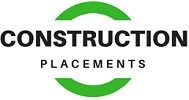Last Updated on November 16, 2024 by Admin
Every growing business’s goal is to scale its operational output while still retaining the quality of its offering. This balance entails a lot of strategic thinking, but they generally follow the same principles depending on these businesses’ industries.
For companies within the construction, warehousing, retail and adjacent industries, one crucial activity that business owners should account for is their materials handling operations. The way and speed in which materials move and get transported can dictate the pace of the operations. And as the adage goes, time is money.
Having said all that, it’s in your company’s best interest to focus on refining your inventory management and materials handling system. This helps your business quicken its operations and plays a big role in ensuring quality and consistency throughout key parts of the supply chain.
Ready to learn how to maximise your business’s materials handling operational efficiency? Then read on—let’s explore the best ways you can make the most out of this vital operation with our seven handpicked tips.
Table of Contents
Create and Refine a Rigid Supply Chain System
First things first, you should create a working system for your supply chain process to ensure smooth operations. The last thing you’d want for your business is to have it devolve into a chaotic organisational mess at the first hint of a setback.
A rigid supply chain system fixes that, ensuring a seamless flow every step of the way—from inventory acquisition from vendors to order fulfilment at the customer’s doorstep. When the supply chain system is streamlined and standardised, every step of the process becomes easier to follow up on. This, in turn, solidifies an efficient workflow.
Furthermore, a refined supply chain system also ensures better product packaging, a calculated stack of transportable goods that aligns with the machine’s carrying capacity, and a predictable zone management route. These elements enhance efficiency and safety in the handling process.
As a business owner, you should always work to improve your operations to ensure that things get done efficiently without compromising quality. Systematising your process is a good start as it helps maintain a sense of order and control over your operations from start to finish, enabling you to easily track and refine steps in the organisational process as needed.
Keep The Workspace Clean and Navigable
Businesses should always strive to uphold a clean and clutter-free workspace. This is especially true in industrial sites, as these spaces are prone to accumulating clutter in the floor which can impede worker productivity and machinery movement.
When the workplace is disorderly with misplaced items and obstacles left unchecked, employees and equipment won’t be able to navigate smoothly. This can cause delays in the operations, particularly the material handling process.
Delays can get costly, so companies need to keep dust, debris, and loose materials from hanging around in high-traffic places. If you have a big warehouse or factory, it’s essential to hire and train custodians and janitors to clean various zones of the facility thoroughly and appropriately. Be sure they’re also adequately trained to handle potentially hazardous goods.
Consider implementing the 5S principle on your facility—sort, set in order, shine, standardise, and sustain. Ensure that all ground workers abide by these principles to maintain orderliness and productivity in the workplace beyond their immediate environment. These principles help maintain structure in the workplace, making it easy to navigate throughout.
Set Predictable Arrivals
Optimising materials handling isn’t only about moving inventory from one place to another efficiently. It’s also about minding the workflow before that essential function and incorporating it into your operations.
This is the job of the project supervisor and supplier coordinator. You want your materials handling team to be ready and able to move goods whenever the supply has arrived or when production needs it. Supply congestion isn’t only disorderly, but it can also bottleneck operations.
Materials handling equipment like pallet jacks from Noble Lift Australia take some time to set up and mobilise from their resting zones to the unloading docks. To ensure that your operational workflow is as smooth as it can be, consider setting predictable arrival periods where this equipment should be stationed.
You can coordinate with your suppliers to set consistent supply arrival schedules to ensure its predictability. You may also use an inventory management system to track the delivery status of the goods and notify and mobilise the handlers with their respective equipment accordingly.
Assign and Train Staff in Specific Functions
Another way to maximise efficiency is by assigning staff to a specific function and training them to excel in that particular field. You want your operations to be more than the sum of their parts.
Think about it: a factory produces more output when everyone does one job and does it well. To maximise efficiency in the workplace, it’s ideal to assign staff members to one particular role and have them control that specific portion of the operations.
Of course, it’s essential to divide them based on their own skillset and experience.
For instance, jack pallet operators should be trained to master their role and route to ensure that they’re performing the transport of goods optimally. Packers, receivers, and straighteners should also be trained to perform their job and be focused on improving speed and consistency.
You can also consider cross-training staff to give your company some backup in case a staff member fails to show up. But for the most part, having one person excel and function in one role is best, as this keeps the workflow consistent and efficient.
Use Staff Scheduling Software
Another way to enhance material handling operations is by managing the staff responsible for it appropriately. You want to ensure that you have enough staff members to meet the demands of the operational chain.
While you can do this manually, a better alternative is to invest in staff scheduling software to manage and assign staff on their task loads. This software gives a visual representation of a staff’s workload for the week, as well as monitors their historic shifts and attendance over the past few days.
This tool is useful to help staff and managers know the assignment for the day in one glance. This tool can also be used to make any reassignments in case a staff member can’t make it on their assigned shift.
With this tool, you can clearly communicate and clarify tasks to your employees. This helps keep them informed and ready to perform their materials handling operations without delay.
Use Machinery to Speed Up Processes
When refining your operations as a business owner, leveraging all possible avenues to enhance efficiency should be top of mind. If you have ample labour resources but still find yourself short on meeting output demands, the next step is to consider investing in the right equipment and machinery to help meet that need.
There are various equipment that can support the materials handling process. Electric pallet jacks, for instance, help carry loads of up to 4,500 pounds from one side of the facility to another without causing much physical exertion on the operator. A forklift and conveyor belt system also helps mobilise inventory and goods.
More advanced technologies like robotic sorting systems can also be installed and programmed to support your operations. All these tools help operators perform tasks more efficiently, and in some cases, more accurately. This makes these tools vital for any workplace dealing with large batches of inventory daily.
Collect Staff Feedback
Finally, it’s important to gather some insights from ground personnel on how the operations are running. They may be able to reveal critical oversights that you may have missed. They could also provide some actionable suggestions that could significantly improve operations.
Employees working directly on the field have a good idea of what the operational workflow is like on a day-to-day basis. Hearing them out by requesting feedback for them helps loads.
You can consider setting up a suggestion box near the worksite where employees can drop notes anonymously. You may also consider setting up monthly or weekly meetings to hear their concerns. This not only helps you find gaps in your operations, but it also motivates your team as they feel more heard.
In any case, be sure to build a culture that promotes staff and managers giving feedback to one another. This can help them perform their task better and potentially foster a better and more productive work environment in turn.
Related Posts
- Required Design Engineer @ Road/Highway Project
- Enhancing Efficiency: The Importance of Goods Lifts in Construction
- Supply Chain Manager Job description and Salary details
- Construction Materials and Supply: Careers in Supply and Management
- Supply Chain Management and Logistics: The Ultimate Career Guide for 2024


